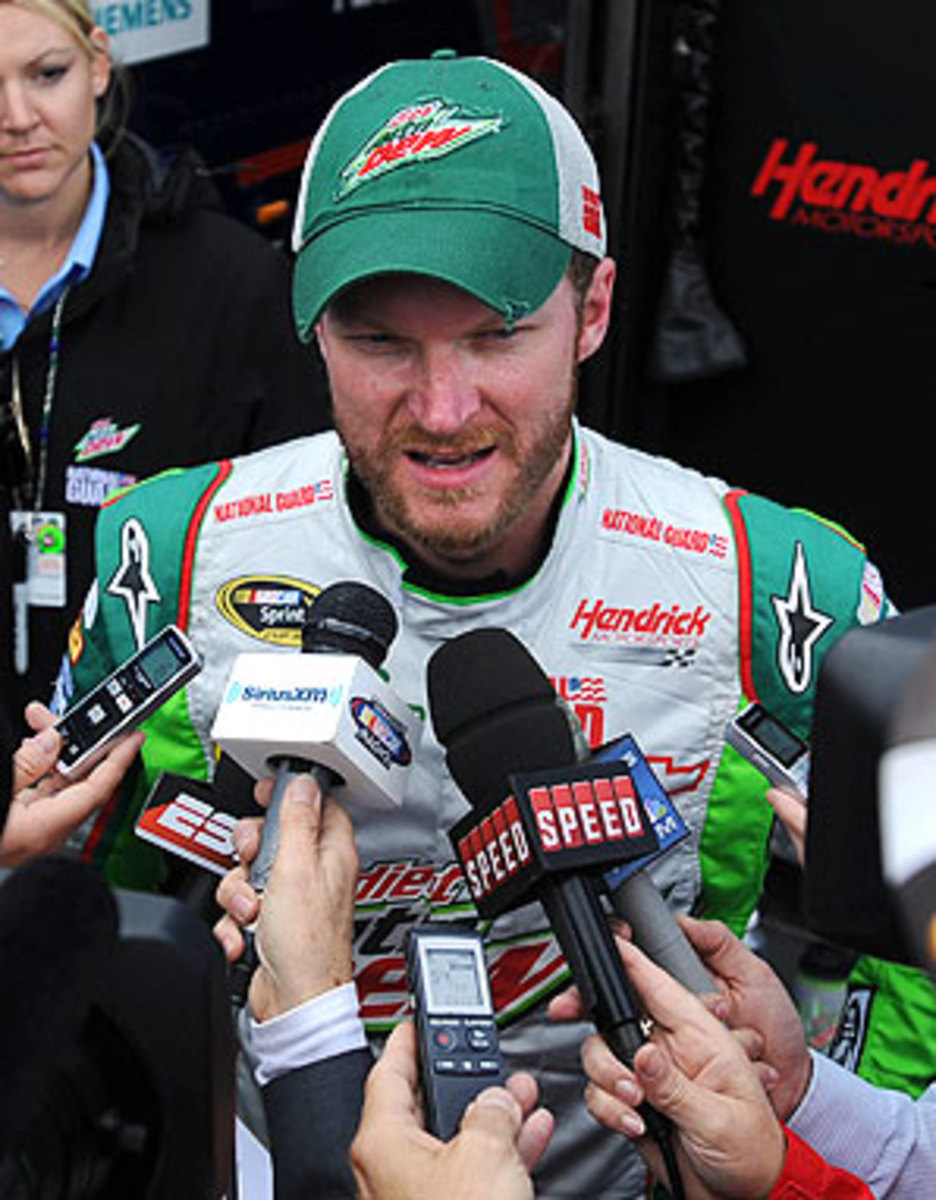Talladega plagued by The Big One
After his car twirled and his title hopes tumbled, Stewart emerged from the infield care center facing TV cameras and microphones. In the moment his voice would carry, Stewart took the blame for triggering the 25-car, last-lap accident and left it at that.
What else could Stewart say?
No matter what the three-time series champion has said or how he's said it, the result remains nearly the same year after year at Talladega and Daytona. Cars crash. Sometimes, a lot of them. It's part of NASCAR's high-speed thrill show at restrictor-plate tracks.
Yet, is there a point the entertainment value isn't worth it? Is there anything NASCAR can do to limit the chaos while giving fans the excitement they expect?
NASCAR has faced this conundrum since Bobby Allison's car flew into the catchfence at Talladega 25 years ago and prompted the use of restrictor plates. While cars no longer top 210 mph, they've been clustered together since that day, making multi-car crashes common.
Twenty-two of the 43 starters in the May Talladega race were listed as being in a crash. Sunday's race was no different: 30 cars were listed as a part of accidents. This also marked the seventh time in the last eight Talladega races there has been a crash involving at least five cars within the final 10 laps. (The spring race featured a nine-car crash near the end.)
After that race in May Stewart sarcastically apologized to fans because "we couldn't crash more cars,'' but he withheld such talk last weekend.
This time it was Earnhardt who spoke up against a style of racing in which he and his father have fared so well, with 15 Talladega victories between them.
"We can't get away from each other with the bumpers lining up and everybody pushing all the time and spinning each other out,'' Dale Earnhardt Jr. said. "I mean that's no good. It's not working. Somebody needs to change it."
Maybe it was the frustration of going an eighth year since his last Talladega win. Maybe it was the frustration of how Sunday's race finished. Maybe it was just time to say something and Earnhardt did.
"If this is what we did every week, I wouldn't be doing it, I will just put it to you like that,'' he said. "If this is how we raced every week I would find another job."
As he talked more about the racing, he asked the media how many cars were involved. When told about 30, Earnhardt replied, "Then that is ok with everybody? That it is like that?''
"I know it sucks for you guys but for the fans it's awesome to watch,'' a reporter said.
"Really? It's not safe,'' Earnhardt said. "Wrecking like that is ridiculous. It's bloodthirsty if that's what people want."
This type of racing also makes blocking more prevalent. Stewart has fought against blocking with a politician's vigor and issued warnings about what he'll do if he's blocked, yet there he was doing the same thing in the last corner of the last lap because that's what this type of racing does.
Some will argue Stewart didn't have to block, but that would be ignoring the fact that he was trying to win. And, because no other driver publicly chastised Stewart's action suggests many, if not all, would have done the same thing if in that situation. It's just that Stewart cut down in front of Michael Waltrip a moment late. With restrictor-plate racing's thin margin of error, that was enough to make the race's lasting image cars sliding and spinning in a smoky haze.
Yet, it's the type of racing some fans seem to want. Talladega's TV ratings are often higher than many other races because of the drama it provides. It's akin to when crowds made the circus the place to see, among other things, the thrills of the trapeze artists. Talladega also has featured crowds of 100,000 or more, but Sunday's crowd was estimated at 88,000 -- the track's lowest in years.
While gas prices to the economy to even the cooler-than-normal weather conditions could explain that declining number, the gaps in the stands were markedly noticeable.
"From an entertainment standpoint, they should be lined up out to the highway out there,'' Jeff Gordon said when asked about the attendance. "That I don't get at all. That makes no sense to me. So there's got to be something more to it.
"If I'm a race fan, I want to see two and three� wide racing all day long, passing back and forth. I want to see guys shoving one another. I want to see the big one at the end of the race because guys are being so aggressive, and knowing that is not something that as a fan you could ever imagine putting yourself into and sort of defying danger.''
Nor is it a trip many might want to experience. But that's the same for drivers.
Regardless of what is said about this type of racing or by whom it's said, they'll still race in a pack at Talladega and Daytona and some will wreck. Is there really any more to say than that?
Stewart didn't think so Sunday.





